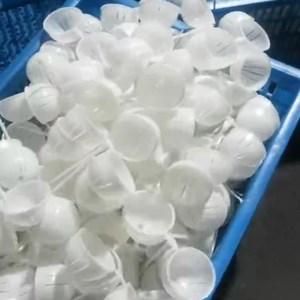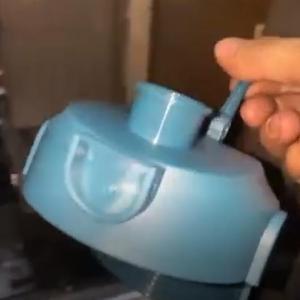Introduction to Injection Molding Process of PC material
Introduction to Injection Molding Process of PC
PC has excellent performance, high transparency, good impact toughness, creep resistance, and a wide temperature range of use. The process characteristics of PC are: low sensitivity of melt viscosity to shear rate, high sensitivity to temperature, no obvious melting point, high melt viscosity, easy hydrolysis of resin at high temperatures, and easy cracking of products. We should pay special attention to distinguishing these characteristics: to increase the fluidity of the melt, instead of increasing the injection pressure, we should adopt the method of increasing the injection temperature. Require the runner and gate of the mold to be short and thick to reduce fluid pressure loss, while maintaining a higher injection pressure.
Before molding, the resin needs to undergo sufficient drying treatment to control its moisture content below 0.02%. In addition, insulation measures should be taken during the processing to prevent re absorption of moisture. Not only does it require reasonable product design, but it is also necessary to master the forming process correctly, such as increasing the mold temperature, post-processing the product, etc., which can reduce or eliminate internal stress. Adjust the process parameters in a timely manner based on the different conditions of the product.
PC injection molding process
1. The injection temperature must take into account the shape, size, and mold structure of the product. Only after considering various aspects such as product performance and requirements can a decision be made. Generally, temperatures between 270~320 ℃ are selected for molding. If the material temperature exceeds 340 ℃, PC will decompose, the color of the product will darken, and defects such as silver threads, dark stripes, black spots, and bubbles will appear on the surface. At the same time, the physical and mechanical properties will also significantly decrease.
2. The injection pressure has a certain impact on the physical and mechanical properties, internal stress, molding shrinkage rate, etc. of PC products, and has a significant impact on the appearance and demolding performance of the products. Too low or too high injection pressure can cause certain defects in the products. Generally, the injection pressure is controlled between 80-120 MPa. For thin-walled, long process, complex shape, and small gate products, in order to overcome the resistance of melt flow and timely fill the mold cavity, Choose a higher injection pressure (120-145MPa). Thus obtaining a complete and smooth surface of the product.
3. The magnitude and duration of holding pressure have a significant impact on the internal stress of PC products. If the holding pressure is too small and the filling effect is small, it is easy to cause vacuum bubbles or surface shrinkage. If the holding pressure is too large, it is easy to generate large internal stress around the gate. In actual processing, high material temperature and low holding pressure are often used to solve this problem. The selection of holding time should depend on the thickness of the product, gate size, mold temperature, etc. Generally, small and thin products do not require a long holding time. On the contrary, large and thick products should have a longer holding time. The length of pressure holding time can be determined by testing the sealing time of the gate.
4. The injection speed has no significant impact on the performance of PC products. Except for thin-walled, small gate, deep hole, and long process products, medium or slow processing is generally used, preferably multi-stage injection, and a slow fast slow multi-stage injection method is generally adopted.
5. The temperature of the mold is generally controlled between 80-100 ℃. For products with complex shapes, thin layers, and high requirements, it can also be raised to 100-120 ℃, but it cannot exceed the hot deformation temperature of the mold.
6. Due to the high viscosity of PC melt, the screw speed and back pressure should not be too high in order to facilitate plasticization, exhaust, maintenance of the plastic machine, and prevent excessive screw load. Generally, it is advisable to control the screw speed between 30-60r/min, while the back pressure should be controlled between 10-15% of the injection pressure.
7. During the injection molding process of PC, the use of release agents should be strictly controlled, and the use of recycled materials should not exceed three times, with a usage amount of about 20%.
【 Selection of screw 】
Requirements for plastic machines for producing PC products: The maximum injection volume of the product (including runners, gates, etc.) should not exceed 70-80% of the nominal injection volume. The screw should be a single head thread with equal pitch and a gradual compression type screw with a check ring. The length to diameter ratio of the screw is 15-20, and the geometric compression ratio C/R is 2-3.





